45 sea star anatomy
seatalespublishing.com › sea-stars-starfishSea Stars (Starfish): Anatomically Speaking – Seatales ... 1. Eye: The common sea star has five eye spots on the tip of each of its five rays. These eye spots can see shadows and light. 2. Tube feet: Sometimes called podia, the sea star’s tube feet extend from the underside of each of the sea star’s rays. Sea Star Anatomy and Function Flashcards | Quizlet Anus. Regulates egestion of undigested food (feces) from the body. Madreporite. Porous entrance to the water vascular system that serves as both pressure regulator and simple filter. Ambulacral grooves. Radiate from the mouth to the tip of each arm and house the tube feet. Tube feet. Locomotion and prey capture. Cardiac stomach.
Basic Facts about a Starfish's Biology and Behavior - ThoughtCo Sea stars move using their tube feet and have an advanced water vascular system that they use to fill up their feet with sea water. They do not have blood but instead take in seawater through the sieve plate, or madreporite, located on top of the sea star, and use that to fill up their feet.

Sea star anatomy
comparativeanatomybiology.weebly.com › sea-starSea Star Anatomy - Comparative anatomy Sea Stars are invertebrates and organisms with no head, but tube feet and arms where they can sense as well as see. These five arms or more, can regenerate them as long as the central disk is not affected. They have radial symmetry and an oral surface as well as aboral with the arms and disk covered with spikes. Creature Feature: Sea Stars - Blue Ocean Society Sea Star Anatomy When asked to describe a sea star, most people would say that it's an animal with five arms that surround a central disc. The stars commonly found in the Hampton area usually do have five arms but sea stars may also have six, seven, ten to fifteen, or even fifty arms. Starfish & Sea Urchins - National Park Service Starfish are among the principal predators of the intertidal zone. Although several species are found locally, almost all that are seen in the Bartlett Cove area are the five armed mottled starfish, Evasterias. Starfish are echinoderms, related to sea urchins and sea cucumbers.
Sea star anatomy. starfish summary | Britannica starfish, or sea star, Any of 1,800 echinoderm species (class Asteroidea) that have regenerable arms surrounding an indistinct disk and that inhabit all oceans. Species range from 0.4 to 25 in. (1-65 cm) across, but most are 8-12 in. (20-30 cm) across. Their arms, usually five, are hollow and, like the disk, covered with short spines and pincerlike organs; on the lower side are tube feet ... Sea Stars of The Pacific Northwest_biology Sea stars have no brain or central nervous system. Instead a nerve ring in the central disc connects to radial nerves running down the length of each arm. These nerves join a diffuse network of nerve cells scattered throughout the skin. REPRODUCTION Sea stars have separate sexes. study.com › learn › lessonStarfish Anatomy & Characteristics | What are the Different ... Jan 21, 2022 · Sea stars have radial symmetry, which means their anatomy is arranged in a circle while their arms are evenly spaced out around the central disc. The organism's body does not have either a left or ... | Sea star anatomy. Basic anatomy of a sea star with cross section of a ... Basic anatomy of a sea star with cross section of a ray. Anatomical sites sampled for this study include: (1) pyloric caeca (green), (2) gonads (yellow), (3) body wall (gray) and (4) coelomic ...
Starfish Dissection Lab The sea star will use its rays and suckers on its tube feet to pry open the clam shell. The sea star will then extend its stomach out of its mouth and into the clam's own shell. The hepatic caeca will produce powerful digestive enzymes that will dissolve the soft body of the clam allowing the sea star to absorb this with its stomach. › animals › invertebratesStarfish (Sea Stars) | National Geographic - Animals Beyond their distinctive shape, sea stars are famous for their ability to regenerate limbs, and in some cases, entire bodies. They accomplish this by housing most or all of their vital organs in... PDF SEA STAR fact sheet - Seattle Aquarium spined sea star) to 40 inches across (our local sunflower sea star). Most sea star species have five arms but many have more. The sunflower sea star can have up to 24 arms. • Longevity: Sea stars can live a relatively long time. Some species, including the sunflower sea star, Pycnopodia helianthoides, live for more than 30 years. Sea Star Anatomy 101 - ThoughtCo Sea stars are echinoderms, which means they are related to sea urchins, sand dollars, basket stars, brittle stars, and sea cucumbers. All echinoderms have a calcareous skeleton covered with skin. They also usually have spines. Here you will learn about the basic aspects of sea star anatomy.
Scienstructable 3D Dissection Model®: Starfish Paper Dissection This sea star/starfish dissection model will be the star of the show as students take a hands-on approach to learning the anatomy of the starfish. Students color, cut out, and assemble a paper model while learning to identify and explain the anatomical structures and functions of the starfish. biologywise.com › starfish-anatomyStarfish Anatomy - Biology Wise Starfish are echinoderms, and belong to the class Asteroidea. This species is also known as ‘sea star’. These are found in the Pacific, Atlantic, Indian, and even the Arctic and Southern oceans. They are an important part of marine ecology, and are one of the most familiar marine animals. › species › sunflower_sea_starSunflower Sea Star | Online Learning Center | Aquarium of the ... Primarily carnivorous, P. helianthoides feeds on sea urchins, fish, mussels, crustaceans (barnacles and crabs), clams, sea cucumbers, gastropods, sand dollars, and occasionally sponges and algae. Sea urchins make up 21 to 98 percent of most sunflower sea star diets. To find prey, they use their strong sense of smell and very sensitive indicators of light and dark. › facts-about-sea-stars-229186512 Surprising Facts About Starfish - ThoughtCo Feb 4, 2020 · Sea stars belong to the phylum Echinodermata. That means they are related to sand dollars, sea urchins, sea cucumbers, and sea lilies. Overall, this phylum contains approximately 7,000 species. 1 Many echinoderms exhibit radial symmetry, meaning their body parts are arranged around a central axis.
The Microbial Landscape of Sea Stars and the Anatomical and ... The sea star microbiome was also significantly different from seawater with relatively few shared microbial taxa. Microbial communities were found to be significantly different between the pyloric caeca, gonads, coelomic fluid, and body wall of the animals. ... Sea star anatomy. Basic anatomy of a sea star with cross section of a ray ...
Creature Feature: Sea Stars - National Park Service This type of sea star has 4 rows of tube feet in an open groove (a long indent or channel) along the underside of each arm. They use their tube feet for: Locomotion: They use a water-vascular system, which is like a network of canals and reservoirs. Water is pulled in through the madreporite (the pale spot on top of the sea star) and sent to ...
Sea star | echinoderm | Britannica sea star, also called starfish, any marine invertebrate of the class Asteroidea (phylum Echinodermata) having rays, or arms, surrounding an indistinct central disk. Despite their older common name, they are not fishes. high Arctic sea star
Sea star anatomy - Emily S. Damstra Sea star anatomy. anatomy and life cycles, animals - invertebrate, echinoderms - Medium: digital . Illustration of the anatomy of a sea star (starfish) Emily S. Damstra 3-304 Stone Road West, Suite 211. Guelph ON Canada N1G 4W4 (519) 616-3654. esdamstra@gmail.com.
Sea Star - Animals Up to 11 pounds Most sea stars sport spiny skin and five arms, although some can grow as many as 50 arms. The arms are covered with pincerlike organs and suckers that allow the animal to slowly...
7 Facts About Sea Stars That Are Out of This World The anatomy of a sea star's digestive system is quite alarming, and has an incredibly unique two-part stomach system. Here's what happens during the digestive process: first, a sea star moves its entire body on top of its prey, so that its mouth is centered on the organism of choice.
Phylum Echinodermata | Biology for Majors II - Lumen Learning This diagram shows the anatomy of a sea star. Morphology and Anatomy. Adult echinoderms exhibit pentaradial symmetry and have a calcareous endoskeleton made of ossicles, although the early larval stages of all echinoderms have bilateral symmetry. The endoskeleton is developed by epidermal cells and may possess pigment cells, giving vivid colors ...
Sea Star Anatomy - jburroughs.org Sea Star Anatomy Anatomy of the Sea Star These photographs of the organs of a sea star are intended to serve as a review resource and to be used to prepare for a laboratory exam. Users of this review are encouraged to identify the organs shown and then to record the names of the organs.
Starfish - Wikipedia Starfish or sea stars are star-shaped echinoderms belonging to the class Asteroidea (/ ˌ æ s t ə ˈ r ɔɪ d i ə /).Common usage frequently finds these names being also applied to ophiuroids, which are correctly referred to as brittle stars or basket stars. Starfish are also known as asteroids due to being in the class Asteroidea. About 1,900 species of starfish live on the seabed in all ...
17 Characteristics of Sea Star - Habitat - Reproduction Sea Star Larvae; Sea star larvae formed by millions of male sea star sperms and millions of female sea star females egg that has been released into the ocean. ... Nerve net can vary from its anatomy and positioning. While human has central nervous systems, sea star has its own nerve net that serves similar purpose as human's central nervous ...
Sea Star - Description, Habitat, Image, Diet, and Interesting Facts Description of the Sea Star There are over 1,500 different species of sea star, which come in many different shapes and sizes, but all of these animals consist of arms extending from a central disk. In most species, starfish have five arms, giving them a star-shaped appearance.
Starfish & Sea Urchins - National Park Service Starfish are among the principal predators of the intertidal zone. Although several species are found locally, almost all that are seen in the Bartlett Cove area are the five armed mottled starfish, Evasterias. Starfish are echinoderms, related to sea urchins and sea cucumbers.
Creature Feature: Sea Stars - Blue Ocean Society Sea Star Anatomy When asked to describe a sea star, most people would say that it's an animal with five arms that surround a central disc. The stars commonly found in the Hampton area usually do have five arms but sea stars may also have six, seven, ten to fifteen, or even fifty arms.
comparativeanatomybiology.weebly.com › sea-starSea Star Anatomy - Comparative anatomy Sea Stars are invertebrates and organisms with no head, but tube feet and arms where they can sense as well as see. These five arms or more, can regenerate them as long as the central disk is not affected. They have radial symmetry and an oral surface as well as aboral with the arms and disk covered with spikes.


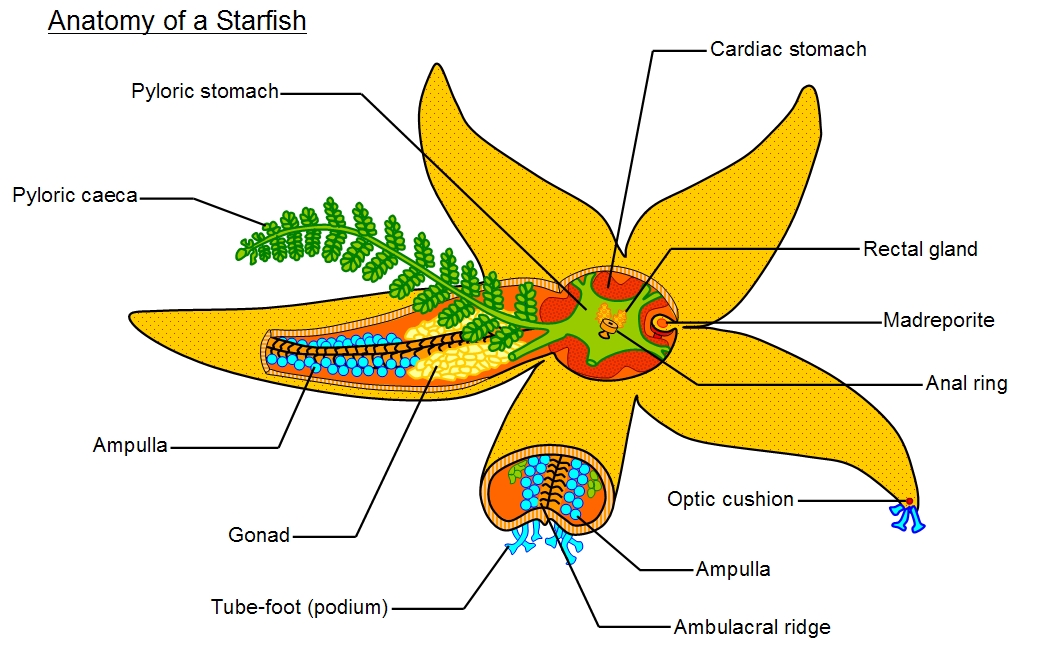

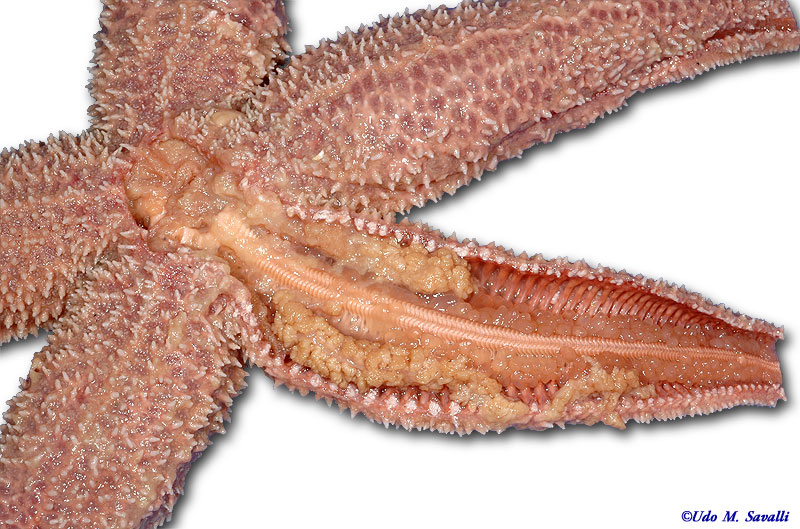


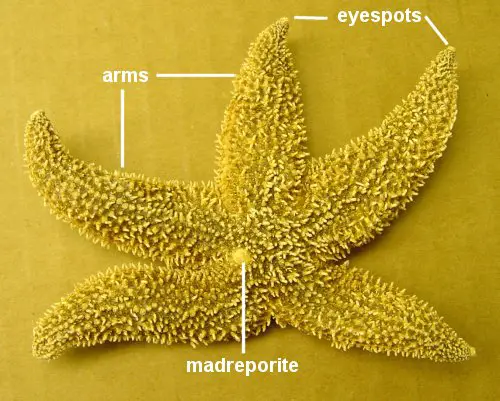

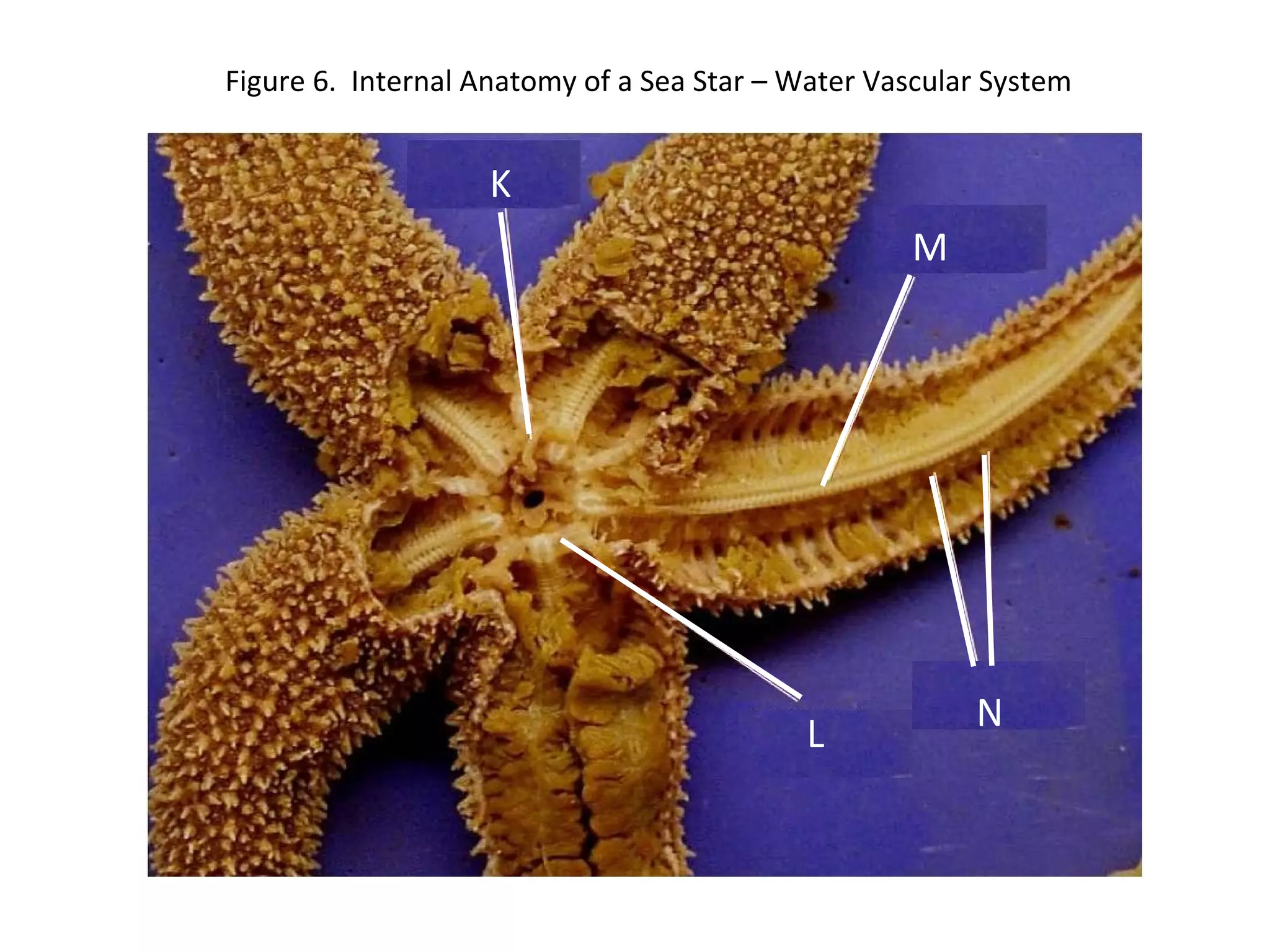



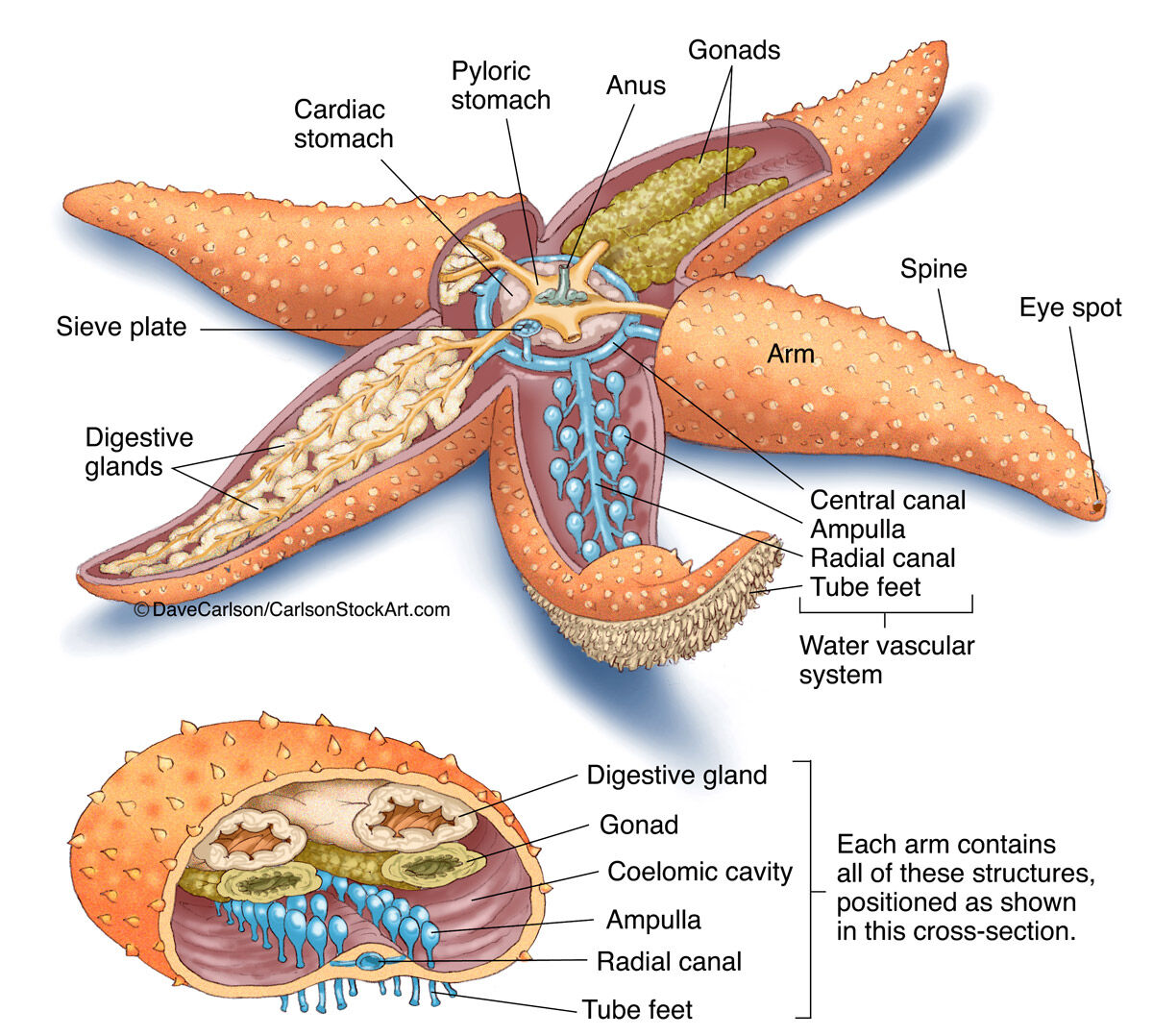

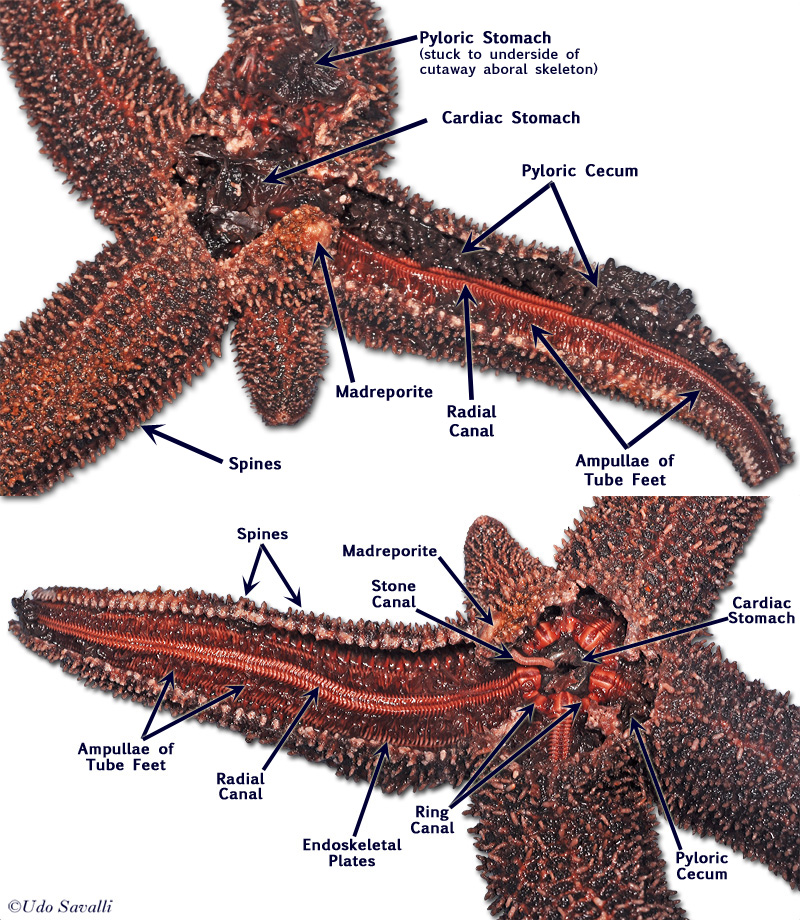

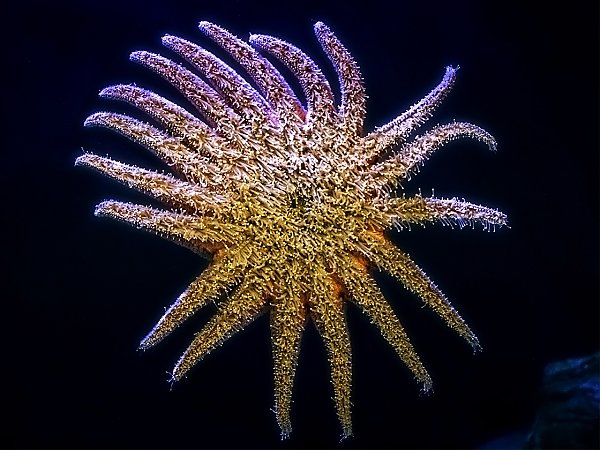

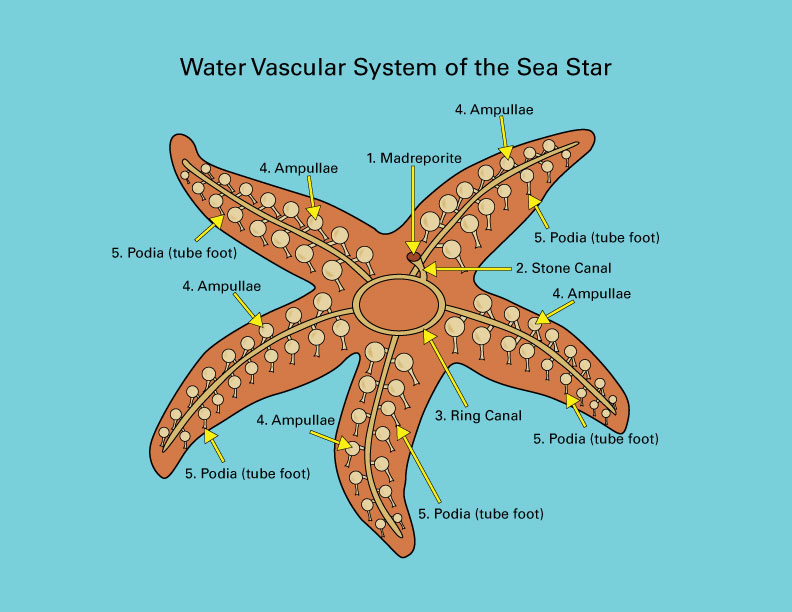


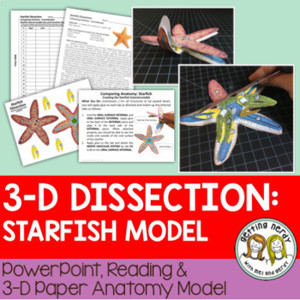


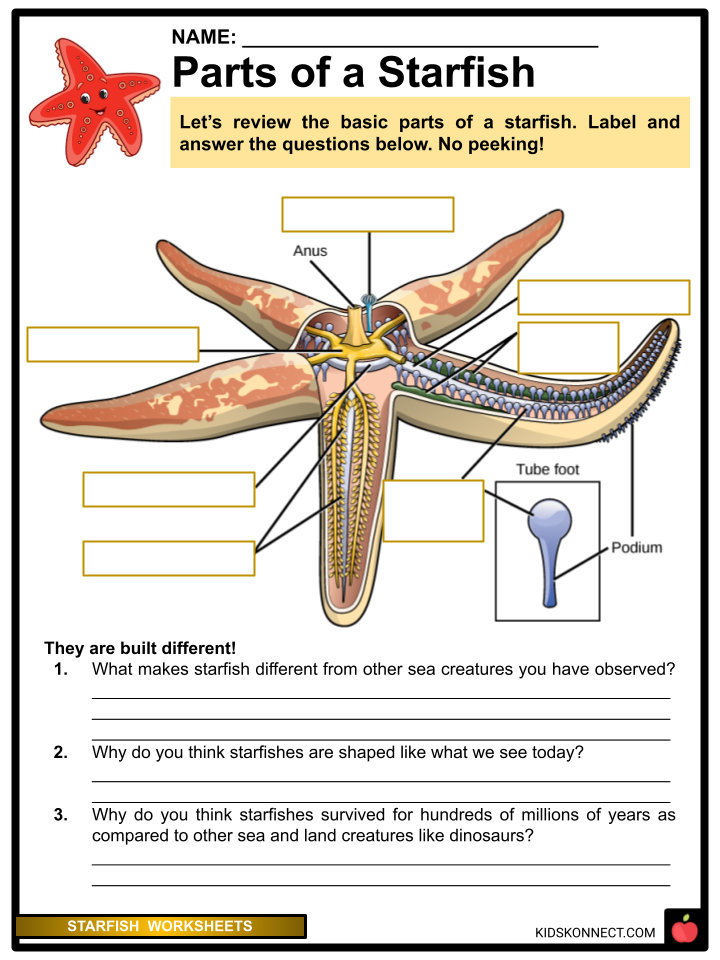

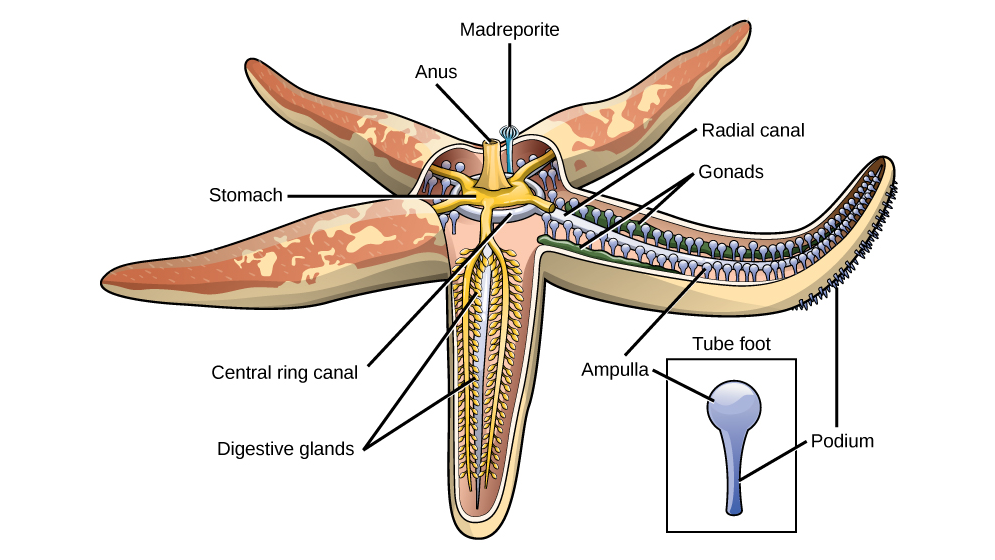


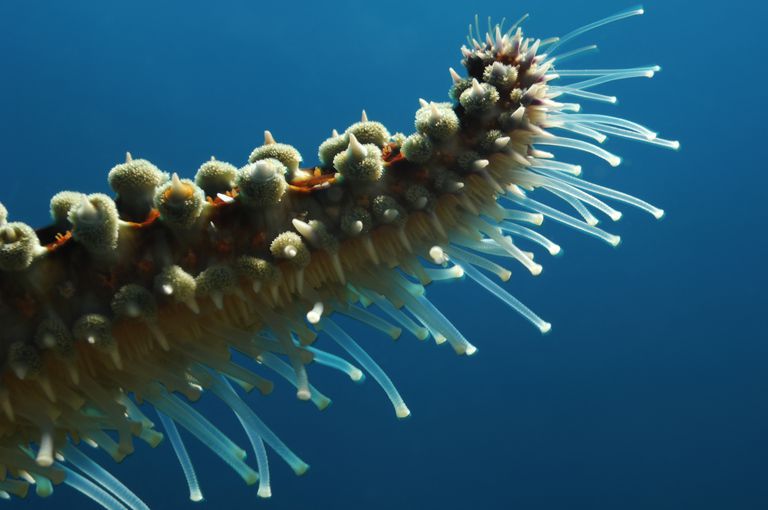
:max_bytes(150000):strip_icc()/Sea-star-regenerating-Galapagos-Jonathan-Bird-getty-56a5f76f3df78cf7728abeb8.jpg)

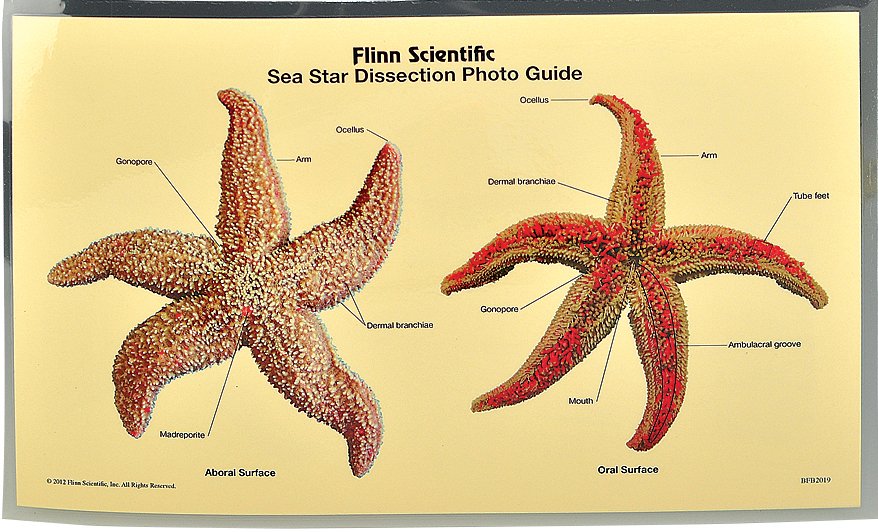
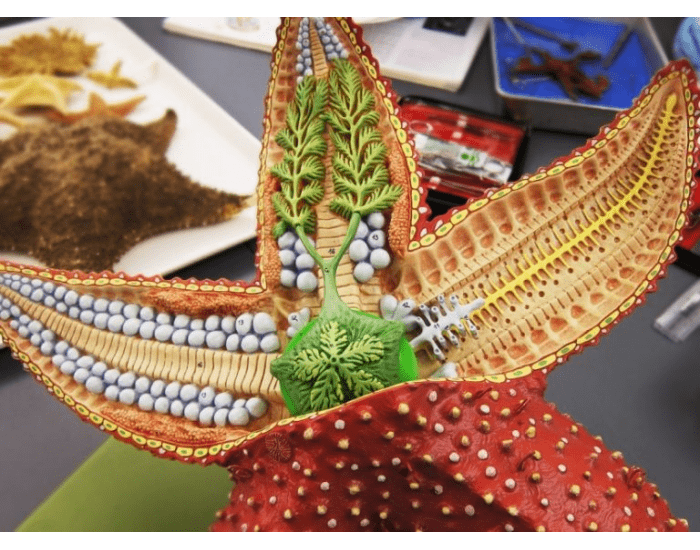
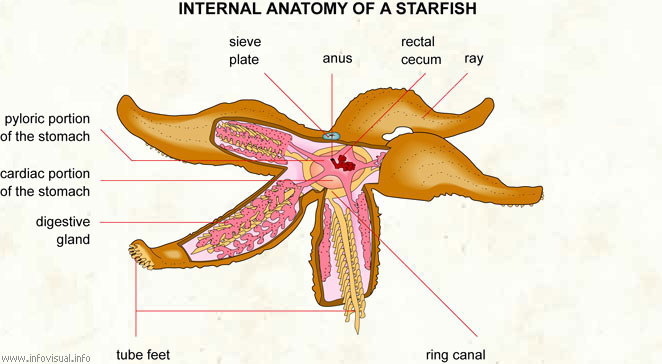
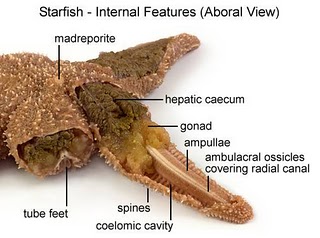
Post a Comment for "45 sea star anatomy"